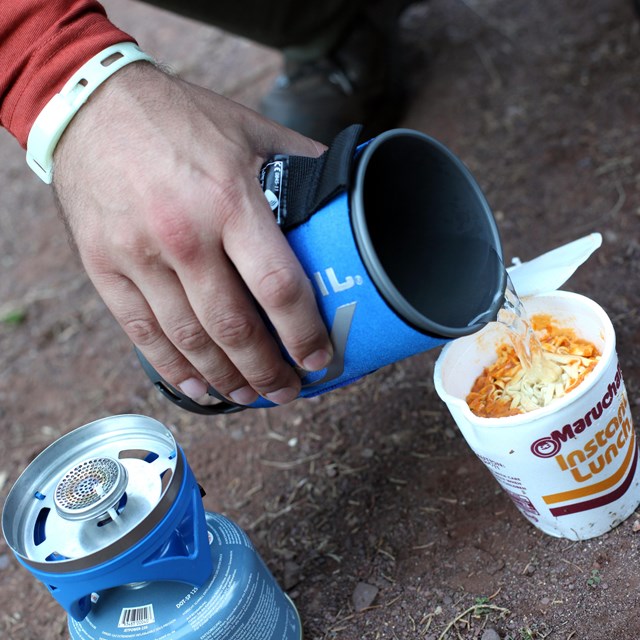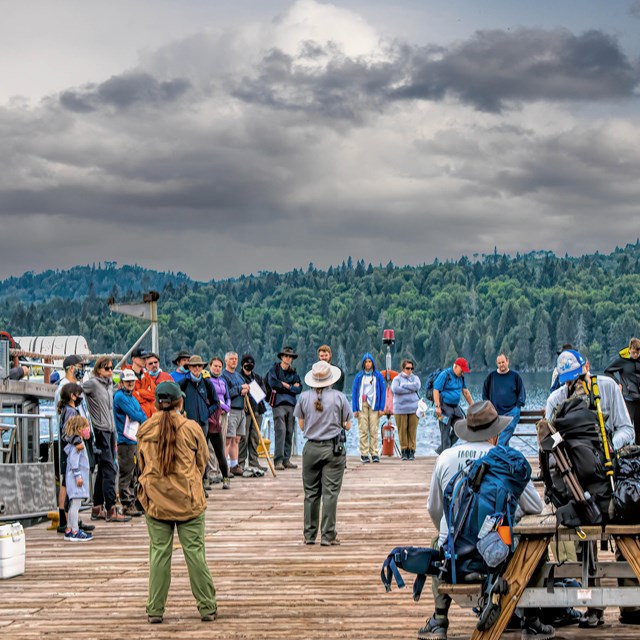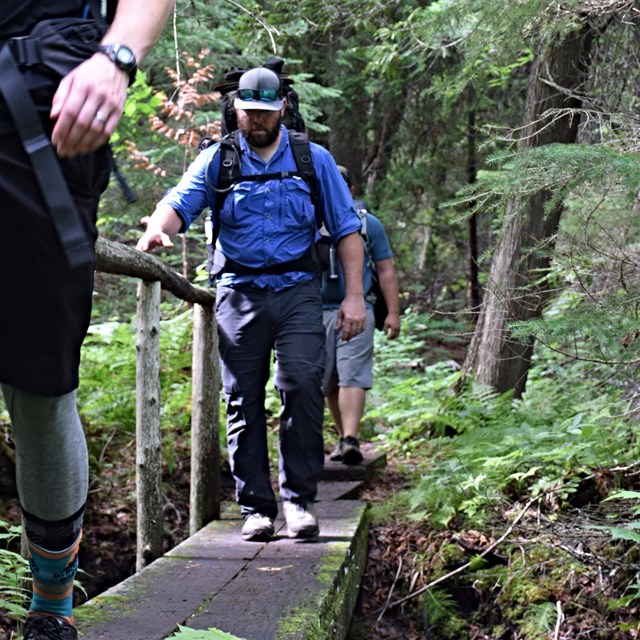
NPS/Bridget Byrne
In order to protect wildlife and visitors, food storage regulations are now in effect within Isle Royale National Park.
Food Storage on Isle Royale is EvolvingSome Isle Royale species, such as gray jay, red squirrel, fox, deer mice, and otter, have always been interested in human food. However, in the past two years, a small amount of Isle Royale wolves have taken an interest in humans, our food, and human activities. For this reason, and to protect wildlife and visitors, Isle Royale National Park introduced stricter food storage regulations beginning in 2025.
Many parks have food storage regulations in place in order to deter bears, but there are no bears on Isle Royale. The main species of concern is wolves. Data and research for wolves and food storage is not as complete as similar research for bears. In the absence of standardized wolf-food storage practices, utilizing common bear food storage safety is the precautionary principle. Due to the lack of wolf-tested research at this time, Isle Royale has also adopted food storage regulations that are standard in practice with bear-resistance. For this reason, food storage on Isle Royale is an evolving situation. As more is learned about Isle Royale wolf behavior and human food-conditioning in wolves, Isle Royale visitors can expect food storage regulations to adapt and adjust accordingly. Because there are no bears on Isle Royale, what are commonly known as “bear boxes” or “bear canisters” will be referred to as “food storage lockers” or “animal-resistant containers” when in reference to Isle Royale regulations. Animal-Resistant Containers are Required for Overnight CampingContainers on this page, typically known as “bear-resistant canisters,” are approved. Containers not on this list are not guaranteed to be in food storage compliance. 
NPS Food Storage Regulations
Hanging Items
Do not leave gear or belongings unattended anywhere. Staying Aboard a Boat or at a DockSecure all food, gear, trash, fish, fish guts, and cooking supplies inside the cabin, or within an approved animal-resistant container. Staying in a CampgroundFollow the regulations for backpacking and camping.

NPS Food Storage Lockers: Use ThemWhile food storage lockers are now available at most campgrounds, implementation and installation is ongoing. In some locations, food storage lockers are available for use, but they are not yet in their final location.
Locker Locations
Backpack Storage Areas: Use ThemBackpack storage areas are open in Rock Harbor and Windigo. These fenced-in areas are open to all visitors, including daytrippers and lodge guests, who need a place to store their backpackers and gear while recreating in the island's developed areas. There are no reservations or fees required to use the backpack storage areas.Backpack storage areas can be used while going on a day hike or paddle, while waiting for a seaplane or ferry, while shopping or dining at one of the stores or restaurants, or while visiting Isle Royale on a daytrip. Never leave backpacks or gear unattended, even on a dock or near a visitor center. TrashAll trash and leftover food (including peels, cores, nutshells) must be properly stored in an animal-resistant container and food storage locker or shelter. Do not leave trash or abandon items in food storage lockers or shelters.Do not burn, bury, or place garbage in outhouses or pit toilets. On-island trash disposal can only be found in Rock Harbor and Windigo. Understanding Wolf BehaviorIsle Royale is wolf habitat, and proper precaution should be taken. Awareness of wolf behavior is essential for ensuring both visitor safety and wolf conservation. Natural WarinessIn the wild, wolves typically avoid humans. Maintaining this behavior is crucial for their survival and visitor safety. HabituationAny animal can become habituated to human presence, leading them to approach visitor use areas. Signs include:
Food ConditioningFood conditioning occurs when animals associate humans with easy food sources, prompting behaviors like investigating campsites, tent, backpackers, gear, or trash. Wolf EncountersIf you encounter a wolf, do not approach it. Encourage it to leave by clapping and yelling. If the wolf does not leave, maintain eye contact and back away. Do not run or turn your back to the wolf.If you cannot leave safely, make yourself big and aggresively use hiking poles or branches to discourage the wolf from approaching. Wolf attacks on humans are xceedingly rare, but if it were to happen, defend yourself by any means necessary. Report all wolf sightings and interactions to park staff. Wolf/Human Conflict ManagementThroughout 2025, park staff and partners will be conducting operations to haze wolves out of developed areas and campgrounds. These activities could utilize noise producing devices, visual deterrents, fencing, paintball markers, pyrotechnics, and non-lethal shotgun rounds. The intention of these activities is to adversely condition wolves to human presence in these areas.
|
Last updated: September 4, 2025



